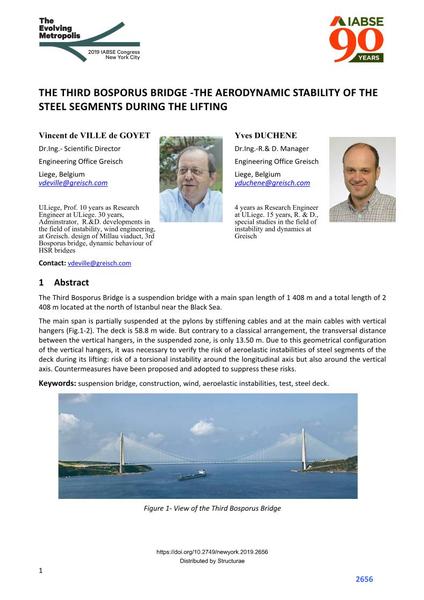The Third Bosporus Bridge – the Aerodynamic Stability of the Steel Segments During the Lifting

|
|
|||||||||||
Bibliografische Angaben
| Autor(en): |
Vincent de Ville de Goyet
(Engineering Office Greisch)
Yves Duchêne (Engineering Office Greisch) |
||||
|---|---|---|---|---|---|
| Medium: | Tagungsbeitrag | ||||
| Sprache(n): | Englisch | ||||
| Tagung: | IABSE Congress: The Evolving Metropolis, New York, NY, USA, 4-6 September 2019 | ||||
| Veröffentlicht in: | The Evolving Metropolis | ||||
|
|||||
| Seite(n): | 2656-2663 | ||||
| Anzahl der Seiten (im PDF): | 8 | ||||
| DOI: | 10.2749/newyork.2019.2656 | ||||
| Abstrakt: |
The Third Bosporus Bridge is a suspendion bridge with a main span length of 1 408 m and a total length of 2 408 m located at the north of Istanbul near the Black Sea. The main span is partially suspended at the pylons by stiffening cables and at the main cables with vertical hangers (Fig.1‐2). The deck is 58.8 m wide. But contrary to a classical arrangement, the transversal distance between the vertical hangers, in the suspended zone, is only 13.50 m. Due to this geometrical configuration of the vertical hangers, it was necessary to verify the risk of aeroelastic instabilities of steel segments of the deck during its lifting: risk of a torsional instability around the longitudinal axis but also around the vertical axis. Countermeasures have been proposed and adopted to suppress these risks. |
||||
| Stichwörter: |
Wind Hängebrücke Versuch Test
|
||||
